Jump to:
Your garden is an ideal space for your dogs to play, exercise, and socialise. However, balancing a love for plants and pets can be challenging. Certain plants, chemicals, and sharp objects pose risks to your four-legged friends. A safe and enjoyable environment is a must while maintaining the beauty of your green space. In this guide, learn how to harmonise your gardening passion with your pet’s safety and happiness in a few steps!
The Ten Effective Ways
Balancing an attractive, presentable garden with the presence of your pets is tricky. But it is achievable, and we’ve got you covered. Our top tips below will help you create a dog-friendly outdoor space:
1. Secure with fences
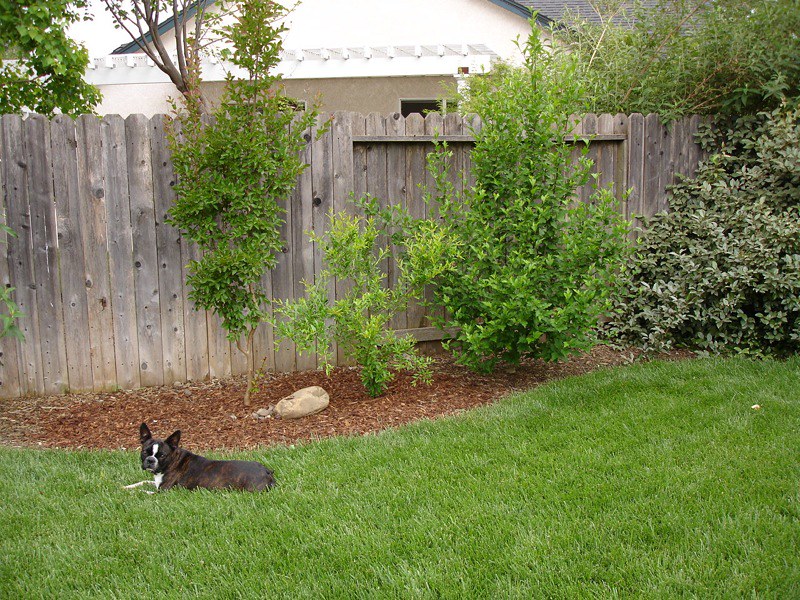
To keep your dog safely within your garden, install a sturdy fence free of gaps. For leash-free roaming, ensure your fence is both high and secure. A minimum height of 6 feet is recommended, as many dogs are capable jumpers. Additionally, robust fencing helps protect your garden areas from curious pets.
Consider dividing your garden into separate play and plant areas. This division should be tall and strong enough to prevent your dog from accessing the plants. Now, suppose your garden includes structures like garden sheds. You’ll want to make sure they’re securely locked to prevent potential hazards.
Remember, barriers like aluminium garden gardens are also potential escape points. Ensure they are well-maintained and securely locked. Check regularly for any weaknesses or gaps that a pet might exploit.
2. Manage exposed soil to discourage digging
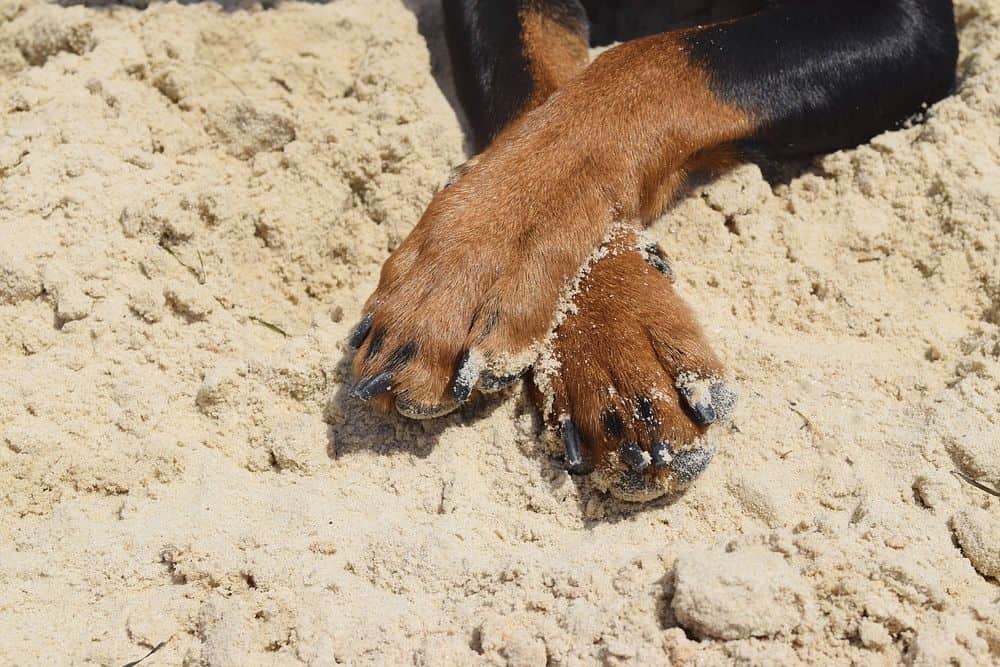
Dogs often dig when they find large, exposed patches of soil, which can lead to a messy garden. To prevent this, consider covering bare soil with low-growing, dog-friendly ground. Or use decorative mulch. These alternatives can deter digging and add aesthetic appeal to your garden.
Another strategy is to allocate a specific area for your dog to dig. This designated ‘dig zone’ can be filled with soft soil or sand. It helps satisfy their natural instinct in a controlled environment. Top tip: Encourage your dog to use this area using positive reinforcement. Praise them when they dig in the correct spot. Or place their favourite toys or treats in the range to attract them.
Don’t forget to inspect your garden for new areas of exposed soil; do so regularly. Address them promptly to keep your garden neat and your dog entertained safely.
3. Secure plants with effective borders
To safeguard your garden’s plant beds from an active dog, install low borders or barriers around them. These structures help prevent your dog from trampling or urinating on plants. What’s more, they add an organised, aesthetic appeal to your garden. Choose materials like decorative stones, bricks, or low fencing.
Additionally, use raised beds for your plants, which are harder for dogs to access. Raised beds offer better drainage and can be a visual deterrent for pets. If your dog is particularly curious, integrate gentle dog-repellent plants. Opt for lavender or rosemary along the borders, which are safe but less appealing to dogs. Teach your dog to respect these boundaries through regular training and supervision.
4. Utilise raised beds
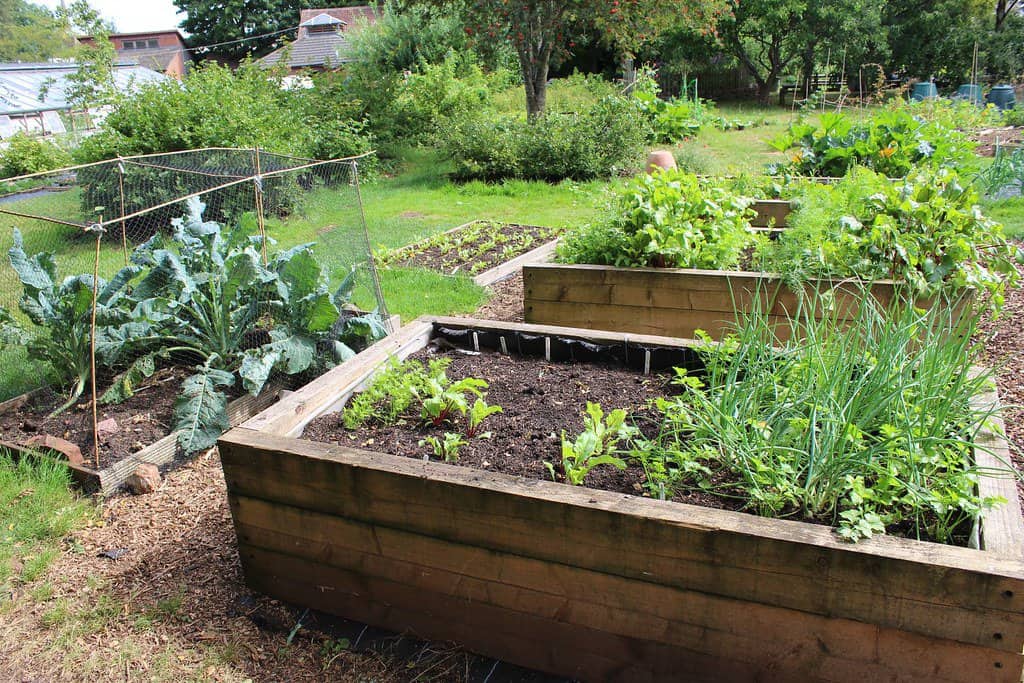
Raised beds are an excellent solution to protect your crops from dogs. By elevating the plants, they become less accessible to pets. This, in turn, reduces the risk of damage or trampling. Raised beds also offer improved soil drainage. What’s more, they can help keep your garden organised and tidy and allow for easier maintenance. Top tip: add a small fence or netting around the raised beds for extra protection. Doing so can ensure your plants remain safe while your dog enjoys the garden.
5. Choose non-thorny plants
While thorny plants like cacti can be visually appealing, they pose risks to your dog. Thorns can become entangled in your pet’s fur or, worse, injure them. To ensure a pet-safe garden, opt for non-thorny plants. There are plenty of beautiful, dog-friendly alternatives that can add colour and texture. Consider plants like ferns, hostas, or marigolds. These greens are attractive and safe for pets. Regularly pruning also reduces the risk of your dog encountering harmful plants. This makes your garden a safer environment for them to explore.
6. Avoid dog-toxic plants
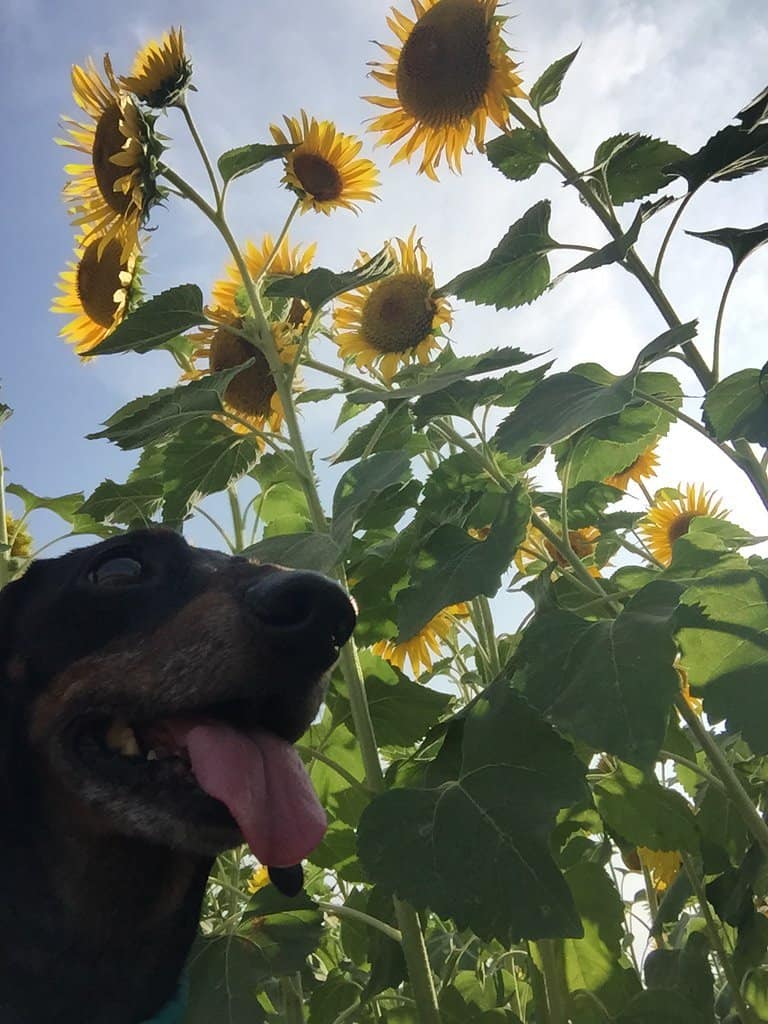
When selecting plants for your garden, it’s crucial to avoid those toxic to dogs. Common hazardous plants include onions, garlic, chives, foxglove, and crocus. These can be poisonous if ingested. Ensure these plants are not accessible to your pet.
For a dog-friendly garden, consider safe alternatives like:
- roses
- sunflowers
- marigolds
- hibiscus
- snapdragons
- asters
- daylilies
- herbs like sage, thyme, and cilantro
These plants not only add beauty to your garden but are also harmless to your furry friend.
Also, be aware of plants that are particularly toxic to dogs, such as:
- chrysanthemum
- hyacinth
- daisy
- morning glory
- daffodil
- iris
- azalea
- lily of the valley
- hydrangea
- carnation
- tomato plants
- geranium
- begonia
- aloe vera
- herbs like English pennyroyal mint and parsley
Regularly review your garden and remove any potentially dangerous plants ASAP.
8. Opt for durable, self-repairing grass varieties
Looking for ways to maintain a lush, resilient lawn in a dog-friendly garden? Consider planting strong, self-repairing grasses. Dog activities like digging and relieving themselves can damage grass. This often leads to patches and root deterioration. Grass types like Buffalo and Kikuyu are known for their durability. Plus, their ability to recover quickly from wear and tear makes them ideal for pet owners.
In addition to choosing the right grass type, regular lawn maintenance is key, such as:
- prompt removal of pet waste
- periodic aeration to prevent soil compaction
- proper watering and fertilising to encourage healthy growth.
For areas with heavy dog traffic, consider reinforcing with additional seed sowing. Or install a dog run to direct activity away from more vulnerable parts of your lawn.
9. Provide a dedicated play area
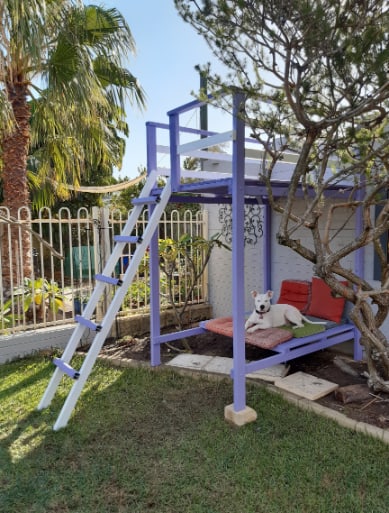
(Image Credit: Wikimedia Commons)
Designate a specific area in your garden for your dog to play. If your dog’s only option is to run around plant beds, they’re more likely to disturb your crops. Create an inviting play zone with your pet’s favourite toys and treats in an open, safe space. This encourages your dog to focus their energy there, protecting the rest of your garden. Include features like a sandbox for digging or agility equipment for exercise.
Regularly rotate the toys to keep your dog interested and engaged. Ensure they associate this area with fun and don’t wander into off-limit zones.
10. Maintain closed garden gates

It’s vital to regularly check and ensure your garden gates are securely closed. This simple practice is crucial for preventing your dog from straying outside unsupervised. It also stops other animals from entering your garden. Consider installing self-closing mechanisms or alarms on gates as an additional safety measure. Regular maintenance of gate hinges and latches also prevents accidental openings. This precaution is easy to overlook but is essential for the safety and integrity of your garden and pet.
Round-up
Creating a dog-friendly garden is all about balance and safety. Each step contributes to a safe, enjoyable outdoor space for you and your furry friend. And with these tips, you can ensure a harmonious coexistence of your beloved pets and your garden. A little planning and regular upkeep go a long way in making your garden a pet-friendly paradise!
Keep all your outdoor essentials in one place, such as in a wooden shed, for a clutter-free garden space. Give your beloved fur friends the best space to run and play around. For their digging spot, invest in a wooden sandpit with lid. Enhance the setup by adding a playhouse for kids!
Up next on your reading list: Awesome Wildlife Garden Ideas
Shop Reverse Apex Workshop




